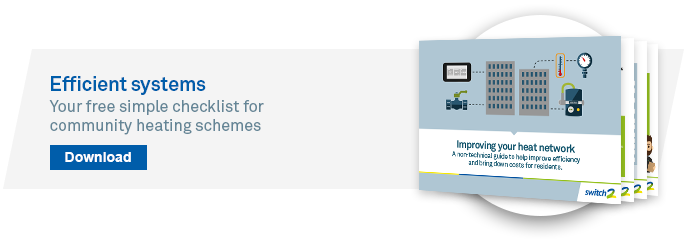Over the past few months, we’ve been focusing on putting residents at the heart of community heating schemes. Here are five posts that will give you the guidance you need.
As community heating schemes continue to develop and increase in popularity, the industry is consolidating best practices. In recent months, this has led to a focus on customer service and satisfaction, keeping residents at the heart of heating strategies.
1. The role for end users in community heating schemes
A community heating scheme can bring a variety of benefits to residents but only when they are fully informed on how to use it, and how they can get the most out of it. There are a number of ways to educate residents, keeping them informed at every stage. Whether it’s understanding their billing structure, knowing how to save money over conventional heating, or being aware of planned maintenance it’s important to create effective communication channels between you and your residents.
2. A proactive and flexible communications system is the best way to engage heat customers
There are a number of communication best practices that you can put into place in order to nurture the relationships you have with your residents and deliver the best service to them. Generally, a proactive and flexible communications system is the best way to engage your residents, whilst ensuring trouble-free metering, billing and payment.
3. Understand the and implement the CIBSE Code of Practice
For vendors and landlords who are unsure on how to take their customer service to the next level, the CIBSE Code of Practice outlines how both parties can start singing from the same hymn sheet. This begins with strong coordination between organisations and departments throughout the supply chain, giving a ‘joined-up approach’ that residents can interact with at any time. This coordination also needs to extend to systems used, bringing customers’ data together in one place, improving communications and a focus on a holistic service.
4. Turn complaints and arrears into a positive outcome
It is also important for providers to take into consideration the viewpoint of the residents themselves. An issue that comes up time and time again surrounds the need for easy and coherent billing. If heat suppliers are able to identify vulnerable consumers, they can be put first and the build up of potential debts can be prevented. Afterall, the National Landlords Association emphasises that debt prevention is better than the cure. By having the right strategy in place and putting residents at the heart of it, billing can be made easier and the risk of debts mitigated.
5. Grants and initiatives to promote smart meters for more accurate billing
To reinforce the importance of helping consumers to pay their bills correctly, a new fund has been launched by Smart Energy GB to provide not-for-profit organisations with grants to engage residents with information on how to get and use smart meters. Smart meters offer many benefits to customers, including ensuring accurate bills and being in full control of their energy usage.
With relationships between providers and residents becoming central to the success of community heating schemes, it’s time to start putting them at the heart of your strategy and helping them to get the most out of your scheme.
Takeaways:
- Residents need to be put at the heart of any community heating strategy
- Accurate usage, billing, and payment are all held in high regard by residents
- A strong and clear communication plan between providers and residents is vital.



